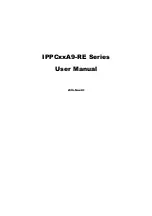
11
Scout 320 REV 3:2018
2.6 Electrical Safety
WARNING!
ONLY QUALIFIED ELECTRICIAN OR SERVICEMAN SHOULD PERFORM ANY
ELECTRICAL TROUBLESHOOTING OR MAINTENANCE TO THIS
EQUIPMENT.
DO NOT PERFORM ANY MAINTENANCE, REPAIRS OR ADJUSTMENTS ON
THIS EQUIPMENT WITHOUT FIRST LOCKING OUT ALL ELECTRICAL
CONTROLS IN ACCOURDANCE WITH ALL FEDERAL, STATE AND LOCAL
SAFETY CODES.
PERSONNEL SHOULD BE TRAINED IN OSHA COMPLIANT LOCK-OUT/TAG-
OUT AND ELECTRICAL SAFETY PROCEDURES.
MAKE CERTAIN THAT THE POWER SUPPLY IS DISCONNECTED BEFORE
ATTEMPTING TO SERVICE OR REMOVE ANY COMPONENTS!
NEVER SHOULD ADJUSTMENTS, MAINTENANCE OR CLEANING BE
PREFORMED WITHOUT FOLLOWING PROPER SAFETY PROCEDURES IN
ACCORDANCE WITH LOCAL, STATE AND NATIONAL SAFETY CODES.
Before making any electrical connections be certain the voltage for which the bar feeder
requires from the lathe is verified with a voltmeter at the power supply connector. Verify this
voltage matches the required voltage of the bar feeder, see machine operator manual section
2.3 Specifications and Capacities
. Failure to do so may result in injury or damage to the
equipment. Normally a bar feeder is ordered from Edge Technologies to be placed with a
specific lathe model. The wiring interface is set in accordance with current information received
to Edge Technologies. There are times the lathe manufacture may update and change the main
connector pin locations and circuits. It is important this is verified with the schematics of the
lathe and bar feeder. In some cases a harness is provided which must be wired into the lathe.
All previous safety advises and information must be adhered to. This form of connection allows
for quickly unplugged for cleaning or service without having to disconnect “hard wired”
connections.
Before starting the bar feeder, check to be sure no tools, packing, or other material have been
left in the machine or lathe.
















































